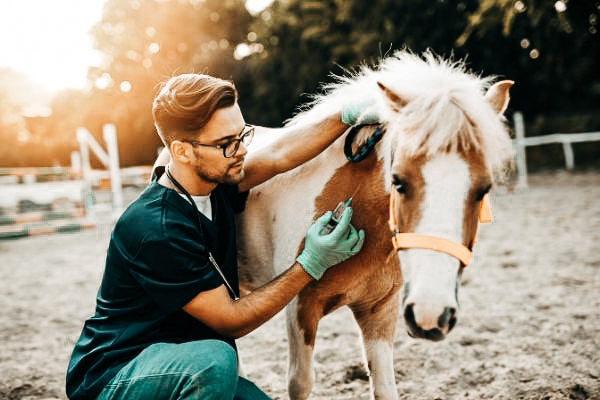
Mane and tail care - secure your horse's hair with ingenious tips
Who isn't impressed by the well-groomed horses in books, magazines, shows or television? Flowing, shiny long hair, open or braided into artistic braids, blowing in the wind of her graceful movements - this is exactly the picture that enchants every viewer without exception. Many horse breeds are born with an abundance of hair, but even with other animals a great desired result can be achieved with extensive care and special tricks. And in this blog you will find out for your benefit that this doesn't just apply to washing, cutting, laying and using mane spray. Proper horse grooming requires a bit of sensitivity. If you pay attention to the following tips, the horse's tail and mane will demonstrably develop positively.
Tip 1: Use special equipment!
This is actually the top priority. In order to keep the horse's tail and mane permanently full and beautiful, it is important to use tools designed for this purpose. A good brush is equipped with rounded bristles/teeth and ensures combing performance without unnecessarily pulling out or breaking hair. But also remember: The gentleness also comes from the way you use it. So always be gentle with your mane brush. Because: A hair that has been torn out takes many years to grow back in its entire length.
Tip 2: Optimize the technique of your work
If you pay attention to your approach when grooming your mane or tail, you have already gained a lot. In fact, the way you comb your horse has a big impact on the fullness or loss of long horse hair. Brushing vigorously is counterproductive and could seriously decimate the horse's tail in the long run.
Better:
First free the mane and tail gently by picking out/shaking straw, hay or shavings. Now carefully untangle strand by strand, hair by hair, without tearing too much. It's time consuming but effective. If you have difficulties, a mane spray can be helpful to loosen it up. Even if you prefer to avoid reading the tail. Let it work for a while and it will get better.
When combing, always comb from bottom to top.
Important: Twist the horse's tail, place it on your thigh and slowly work your way up with the mane brush. For the horse's mane, you can press your left hand to the top of the mane while you comb out the hair on the lower part. This has a similar effect to twisting the tail and keeps the amount of hair pulled out really small.
Instead of using mane spray, you can also wash your horse's long hair. However, you shouldn't do this more than twice a week, otherwise the animal's natural skin protection will suffer. In winter it is better to use Spray, unless you have a solarium on site for drying.
Tip 3: Strengthen hair growth from within
When feeding horses, you have a good opportunity to ensure healthy hair growth with a feed additive. If sufficient nutrients are supplied, this has positive effects on the hair metabolism and thus also on the quality of hair and fur. This strengthening is provided, for example, by valuable oils, biotin, B vitamins, zinc, folic acid and manganese. Simply add these ingredients to the horse's feed as a quickly absorbing liquid and the horse's coat care is guaranteed from the inside.
Tip 4: Protect your hair from “external influences”
Does your horse's hair get bitten or eaten away in the herd while playing? The only thing that helps here is to make it a little unappetizing for the other animals. You could either use a non-toxic snack stop spray or try various home remedies. For some, lemon water helps, for others, Tabasco, tea tree oil or soap. Old riding masters swear by pig bile.but that is very special.also when it comes to the smell :) Grooming is supposed to make horses beautiful, right?
Some horses also step on their own tails. When walking backwards or standing up. In most cases, entire strands are torn out. The solution: Hold the tail approximately at the same length as the fetlock head or braid it. During the "flying period", however, the horse's tail and mane should remain open as protection.
Then there are the “Schubblers”. If it itches, the horse takes care of its coat itself. Unfortunately, it often has unpleasant results. The aim here is to eliminate the cause. The trigger for itching or eczema are mostly black flies, which are particularly intrusive in the morning or evening hours. But you shouldn't forget about the animal's metabolism either. A healthy animal has fewer problems with eczema. The fact is, a fly blanket would be advisable on the outside, the stable possibly. Spray with EM solution twice a week and provide relief to the animal with home remedies (coconut oil, vinegar-water mixture 9:1, marigold ointment, etc.) To provide. Severely affected animals should be examined by a doctor! A cortisone agent, autologous blood treatment or hyposensitization quickly show good results.
Additional tip: Add a few drops of essential oil to your mane spray. Tea tree oil, neem oil, clove or lavender oil are well suited and keep the beasts at bay.



